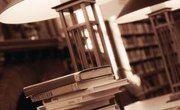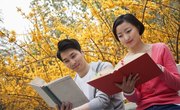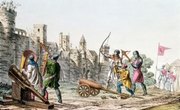English literature means different things in different contexts. Literature comes from the Latin word "litera" which means "acquainted with letters." All definitions of literature agree that English literature includes literary works like novels, stories, poems, nonfiction and plays composed in English. At the college or graduate level, English literature tends to refer to British literature. While in high school and general usage, English literature often refers to any literature written in English.
High School English Literature Class
College Board offers students the opportunity to take the Advanced Placement (AP) English Literature and Composition exam each year. Students taking this test likely will have taken the corresponding AP English Literature class in high school as well. The test focuses on multiple-choice questions, critical reading skills, free response prompts, and tests student skills in literary analysis of free verse and prose passages. An AP English Literature course should study works “written originally in English, including pieces by African, Australian, Canadian, Indian, and West Indian authors.” For high school purposes, English literature generally spans from the 1500s to the present.
From 1450-1600
When English literature solely refers to literature from the British Isles, the literature definition is said to begin around the year 1450. The Tudors and the Elizabethan era brought humanism, renaissance and foreign influence such as the Italian sonnet. Spenser, Sidney, Marlowe and Shakespeare are noteworthy writers from this era of English literature. Examples of literature in this time period include "The Prince" by Niccolo Machiavelli and Shakespeare's Macbeth.
Literature in the 1600s
This time period in English literature was marked by the rule of James I who increased pessimism in England and the rise of Protestantism. Shakespeare wrote some of his darker plays in the early 1600s. Later, great writers emerged like Donne, Milton and Bunyan, author of the important and controversial “Pilgrim’s Progress.” During the 1600s, epic poems and Renaissance dramas were two of the prevalent literature definitions of themes.
From the 1700s-1800s
These years brought neoclassicists like Pope; popular writers like Johnson; Romantics like Shelley, Wordsworth and Wollstonecraft; and Jane Austen, one of the most important women in English literature. The Victorian era, starting in the 1830s, introduced seminal novelists like Dickens, Eliot, and the Bronte sisters. In literature class, poets like Hopkins, Housman and Rossetti are taught alongside non-fiction writers like Macaulay, Carlyle and Ruskin. Famous books during this time period included popular adventure novels like Jonathan Swift's "Gulliver's Travels" and Daniel Dafoe's "Robinson Crusoe."
Literature in the 1900s-Present

The early 1900s brought important works by Irish authors Yeats, Joyce and Beckett. Woolf, Huxley and Orwell are studied in English literature class throughout the anglophone world. After WWI and WWII, English literature focused less on politics, and more on social concerns and aesthetics. Some major writers from the post-war years include Murdoch, Lessing, Graves and Heaney. L. Frank Baum's iconic "The Wizard of Oz" was written in 1900.
Related Articles
References
Writer Bio
Darla Himeles is a freelance writer, editor and poet living in Castine, Maine. A graduate of Bryn Mawr College's English and education programs and a current student in Drew University’s MFA in poetry and poetry in translation program, Himeles writes frequently about education, wellness, writing and literature.











